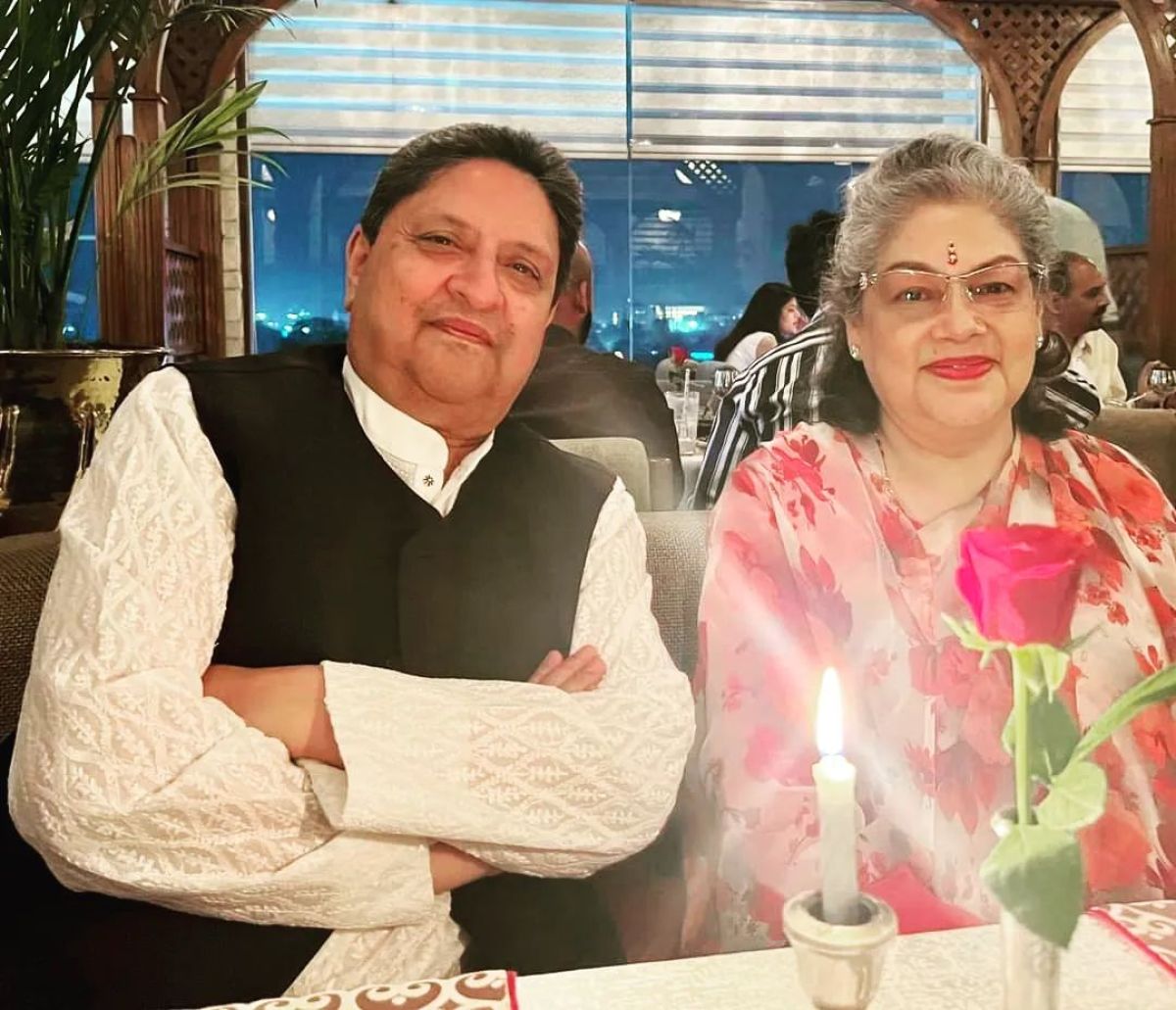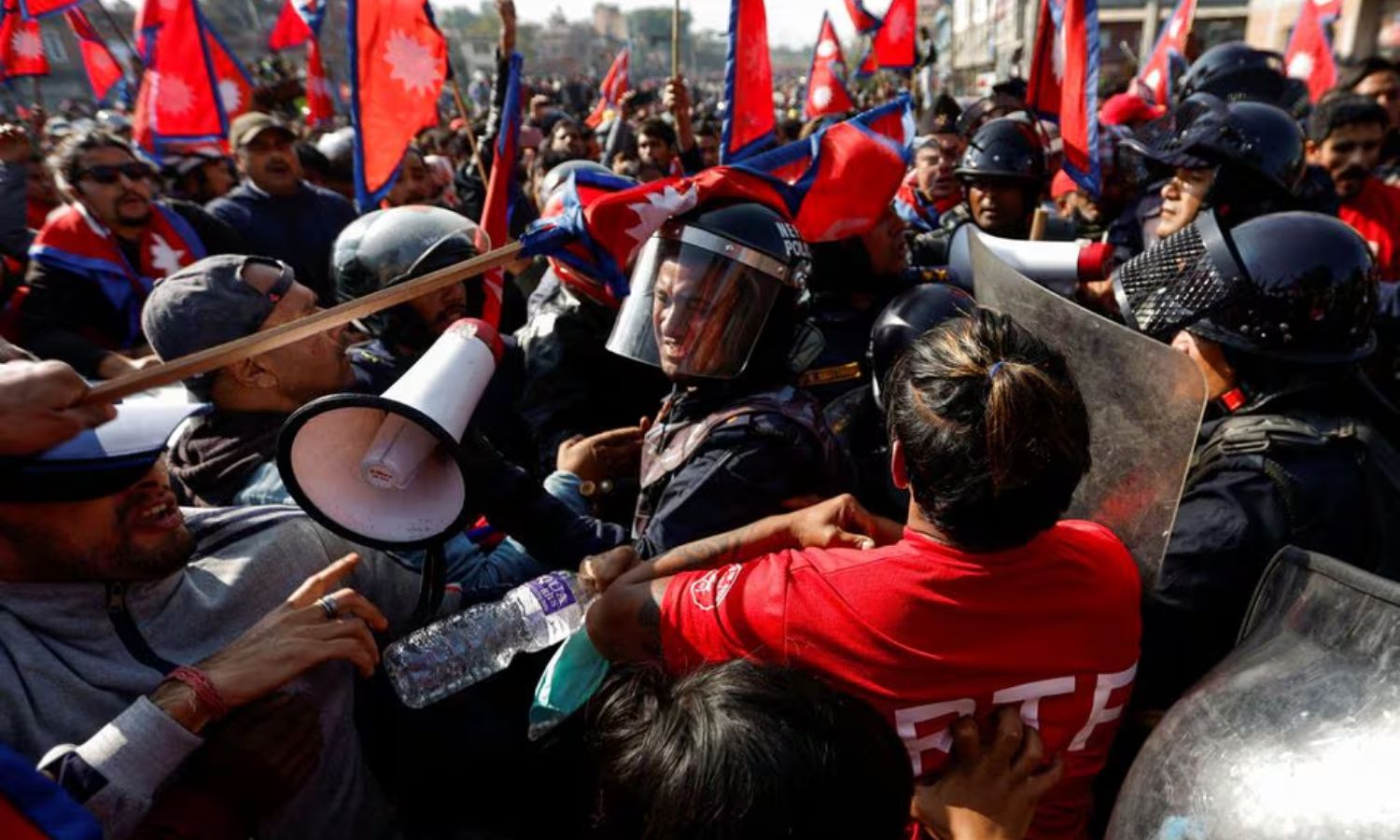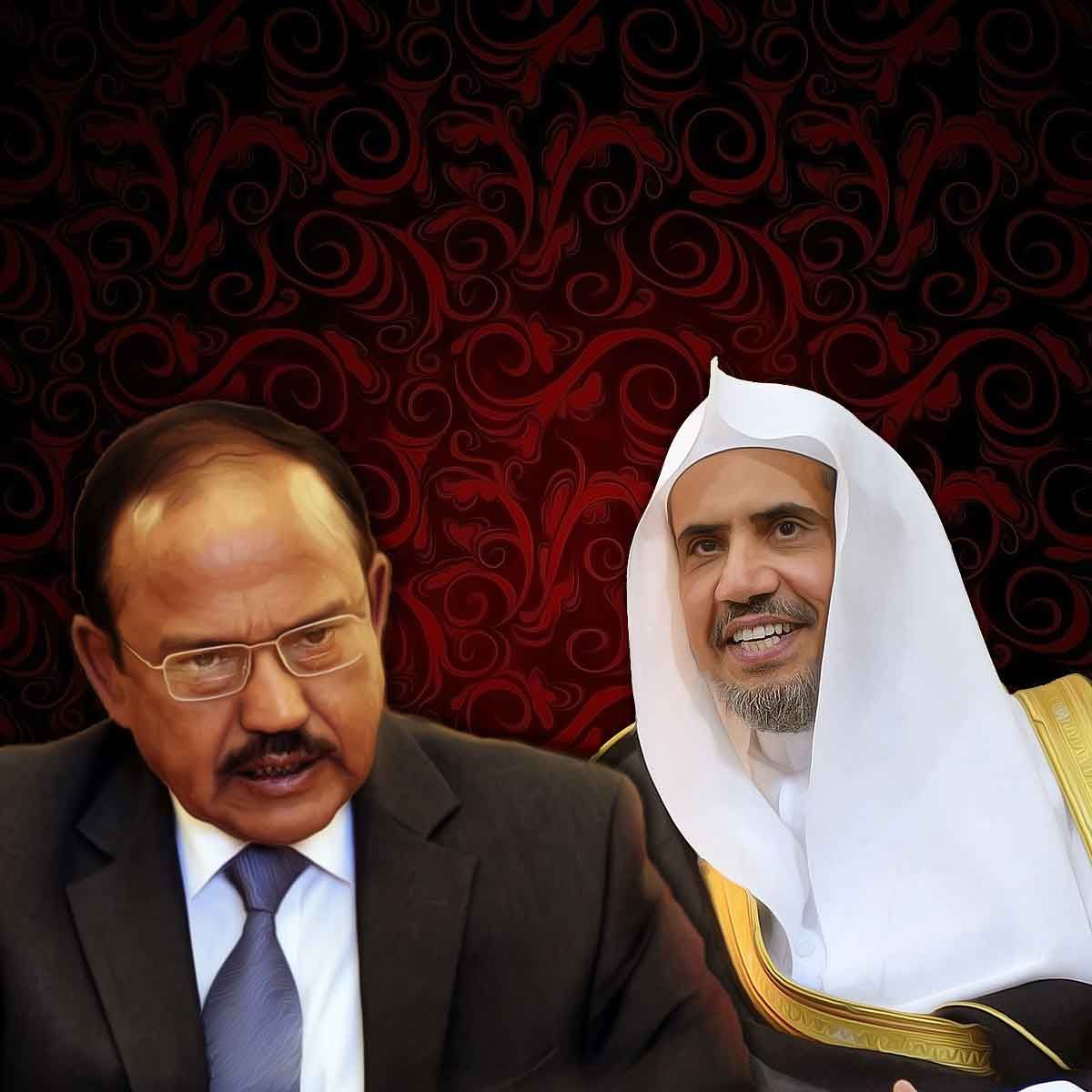MORE COVERAGE
Twitter Coverage
Satyaagrah
Written on
Satyaagrah
Written on
Satyaagrah
Written on
Satyaagrah
Written on
Satyaagrah
Written on
JOIN SATYAAGRAH SOCIAL MEDIA
"Come back king, save the country": In the heart of Himalayas, Nepal witnesses strong protests, with thousands marching for the return of the Hindu monarchy, revival of its past glory as a Hindu state, amidst political upheaval and a quest for stability

"Come back king, save the country": In the heart of Himalayas, Nepal witnesses strong protests, with thousands marching for the return of the Hindu monarchy, revival of its past glory as a Hindu state, amidst political upheaval and a quest for stability
In the heart of the Himalayas, Nepal is witnessing a significant movement that harks back to its royal past. King Gyanendra Shah was compelled to abdicate his throne and make way for a republican system sixteen years ago, following a wave of public protests. This historic event marked a pivotal shift in Nepal's governance, transforming it from a monarchy into a republic. However, the winds of change are blowing once again in Kathmandu, as a new wave of demonstrations is unfolding, with protestors calling for the reinstatement of the monarchy and the return of Hinduism as the state religion.
|
The Associated Press (AP) reports that these recent protests are not isolated incidents but part of a broader movement that has been gaining momentum over the past few months. The demonstrators' demands are twofold: they seek the restoration of Hinduism as the official state religion and the re-election of Shah as king. This movement has stirred the political landscape of Nepal, challenging the status quo and sparking debates on governance and religious identity.
The grievances fueling this movement are deeply rooted in the dissatisfaction with the current political parties. Royalist organizations have been vocal in their criticism, accusing the nation's political leaders of corruption and ineffective governance. They argue that the people of Nepal are disillusioned with their politicians, yearning for a return to a system that they perceive as more stable and just. During a rally in February, a fervent crowd in Kathmandu voiced their support for the monarchy with slogans such as, "Come back king, save the country. Long live our beloved king. We want a monarchy," echoing through the streets.
The call for drastic changes has resonated with a growing segment of the population, leading to increasingly large rallies in favor of the monarchy. This resurgence of royalist sentiment is also visible in the physical landscape of Kathmandu, with a growing number of homes and businesses displaying images of King Gyanendra Shah and his ancestors. This visual manifestation of support underscores the deep-seated longing for a return to monarchical rule and the re-establishment of Hinduism as the state religion, signaling a profound discontent with the current republican system.
|
The Quest for Stability: Nepal's Political Turmoil and the Monarchy's Legacy
Nepal's political landscape has been marked by significant upheaval and change over the past decades. Gyanendra Shah, once a constitutional monarch with limited political and executive power, dramatically assumed full authority in 2005. This bold move set the stage for a major shift in the nation's governance. However, his reign faced substantial opposition, leading to widespread protests that attracted hundreds of thousands of participants. These protests were a clear demonstration of the people's desire for change, culminating in Shah stepping down from the throne and transitioning to life as a commoner in 2006, two years before the formal abolition of the monarchy.
The transition from monarchy to republic was hailed by many as a new dawn for Nepal, promising political stability and economic growth. Yet, the years following the monarchy's dissolution in 2008 have been anything but stable. Nepal has seen an astounding thirteen different governments take the helm, a testament to the ongoing political turbulence that plagues the country. This instability has left many Nepalis disillusioned with the republic, holding it accountable for the nation's struggling economy and the widespread corruption that seems to permeate every level of government.
The sentiment among a significant portion of the Nepali population is one of frustration and disappointment. According to Dhruba Hari Adhikary, an independent researcher based in Kathmandu, there is a growing perception that elected officials are more concerned with securing their power and reaping personal benefits than with addressing the needs and concerns of the populace. Adhikary's observations reveal a yearning for the perceived stability and order of the monarchical era. He encapsulates this sentiment by noting, "That’s why some people started to think that, well, it was far better under the monarchy." However, he also offers a sobering perspective on the royalist movement's prospects, stating, "But the movement is too small to prevail any time soon."
|
In November 2023, the streets of Kathmandu, Nepal's capital, became a vivid tableau of political activism as tens of thousands of people gathered to voice their support for the restoration of the monarchy. This large-scale demonstration, however, met a formidable obstacle as riot police officers intervened, employing batons and tear gas to prevent the protestors from advancing into the city's core. The incident underscores the intensity of the movement seeking to revert Nepal to a monarchy and the government's stance against such demonstrations.
In Nepal, a country with a predominant Hindu population, the kingship held a sacred dimension, with monarchs traditionally seen as incarnations of Vishnu, a principal Hindu deity. This religious reverence added a layer of complexity to the monarchy's role within the national identity. During a rally in February, an agitator named Rudra Raj Pandey eloquently captured the sentiment of many royalists, stating, "Our country will retain its values and identity only if it is turned back to a monarchy and the king is reinstated to the throne." This statement reflects a profound connection between the monarchy and Nepal's cultural and religious identity, suggesting that for some, the restoration of the monarchy is synonymous with preserving the nation's heritage.
Quantifying the exact level of support for the monarchy in Nepal is challenging, as polls and surveys on the topic are scarce. Despite King Gyanendra Shah's unpopularity at the time he took full power, the institution of monarchy itself enjoyed widespread acceptance among the Nepali population prior to the political shifts. The contemporary political landscape, however, reveals a strong opposition to the idea of reinstating the monarchy. Major political parties have firmly dismissed the notion of the former king reclaiming his throne. Narayan Prakash Saud, the leader of the Nepali Congress party, which was the largest party in parliament during the 2006 uprising, made it clear that the monarchy's return was out of the question. He asserted, "Nepal is a republic and the monarchy will never be reinstated. The only way it would be possible would be through changing the constitution, but there is no possibility of that happening at all."
Amidst this political standoff, the Rastriya Prajatantra Party, established in the 1990s by supporters of the monarchy, emerges as the most vocal advocate for the monarchy's return. With 14 seats in parliament, representing approximately 5% of the total, the party is a minority yet holds significant influence in championing the cause of the monarchy. This political representation indicates that while the movement may not have the majority's support to effect constitutional change, it nonetheless possesses a noteworthy platform within the national discourse.
In a significant political development in Nepal, leaders of the pro-monarchy party met with the prime minister in February to express their demands and vision for the country's future. Rabindra Mishra, the deputy chairman of the party, shared a profound belief in the possibility of restoring the monarchy, stating, "I think it is very possible and the environment throughout the country has never been so congenial for this agenda. If we can’t restore the institution of the monarchy in this country, there is no future for the youth in this country and the existence of this country itself could be at risk." Mishra's statement reflects a deep concern for the nation's future, emphasizing the critical role he believes the monarchy could play in ensuring stability and prosperity for Nepal and its people.
The movement for the monarchy's restoration has garnered support from various quarters, despite Gyanendra Shah, the former king, maintaining a low profile since his abdication. Shah has steered clear of directly engaging in political discussions or making public statements about the ongoing campaign for the monarchy's return. His quiet stance has not dampened the spirits of the numerous organizations and groups rallying behind the cause, demonstrating the depth of support for the monarchy among certain segments of the Nepalese population.
One of the most vocal proponents of this movement, Pasupathi Khadga, who leads a youth group advocating for the monarchy's comeback, succinctly captured the sentiment of many royalists by asserting, "We need a monarchy. Without a king, we have no identity as Nepalese and all of us might as well just declare ourselves as refugees." Khadga's statement highlights a perceived loss of national identity and stability in the absence of a monarchy, underscoring a profound sense of displacement and uncertainty felt by some citizens.
The discussions with the prime minister and the outspoken support from figures like Mishra and Khadga represent a critical juncture in Nepal's political discourse. The debate over the monarchy's potential restoration raises important questions about the nation's future direction, governance structure, and the identity of its people.
Nepal's Transition: From Monarchy to Multiparty Democracy
Nepal's journey from a monarchy to a democratic state is a tale of significant political shifts and dramatic events that have shaped the nation's history. Until 1990, Nepal was a kingdom where political parties were a concept not recognized by the state, and the monarchy held absolute power. This all began to change with the rise of a pro-democracy movement that demanded political reforms and the introduction of a multiparty system. This movement marked a turning point in the country's governance, leading to the establishment of elections and transforming the king into a figurehead with a ceremonial role, significantly limiting the monarch's direct involvement in the day-to-day running of the country. This transition was a monumental step towards democratic governance, opening the door for various political ideologies and parties to participate in shaping Nepal's future.
The path to democracy took a dramatic and tragic turn in 2001, with the event that shook the nation to its core—the massacre at the royal palace. King Birendra, who was then the reigning monarch, along with several members of his family, were brutally killed in an incident that remains one of the darkest chapters in Nepal's history. In the aftermath of this heartbreaking tragedy, Gyanendra Shah, King Birendra's brother, ascended to the throne. This unexpected succession brought Gyanendra Shah to a position of significant power during a tumultuous period in Nepal's political landscape.
The events of 1990 and 2001 are pivotal moments in Nepal's history, highlighting the country's struggle for democracy and the complexities of its monarchical system. The introduction of a multiparty democracy was a significant step forward in the nation's pursuit of a more inclusive and representative government. Meanwhile, the ascension of Gyanendra Shah to the throne in the wake of such a tragic event added another layer to Nepal's intricate political narrative, setting the stage for the eventual abolition of the monarchy and the establishment of a republic.
These historical milestones reflect Nepal's ongoing journey towards political stability and democracy, illustrating the resilience of its people and their desire for a government that represents their interests and upholds their rights. As Nepal continues to navigate its political future, the lessons learned from its past, from the establishment of political parties to the tragic transitions of power, remain crucial in understanding the challenges and opportunities that lie ahead.
 |
 Support Us
Support Us
Satyagraha was born from the heart of our land, with an undying aim to unveil the true essence of Bharat. It seeks to illuminate the hidden tales of our valiant freedom fighters and the rich chronicles that haven't yet sung their complete melody in the mainstream.
While platforms like NDTV and 'The Wire' effortlessly garner funds under the banner of safeguarding democracy, we at Satyagraha walk a different path. Our strength and resonance come from you. In this journey to weave a stronger Bharat, every little contribution amplifies our voice. Let's come together, contribute as you can, and champion the true spirit of our nation.
 |  |  |
| ICICI Bank of Satyaagrah | Razorpay Bank of Satyaagrah | PayPal Bank of Satyaagrah - For International Payments |
If all above doesn't work, then try the LINK below:
Please share the article on other platforms
DISCLAIMER: The author is solely responsible for the views expressed in this article. The author carries the responsibility for citing and/or licensing of images utilized within the text. The website also frequently uses non-commercial images for representational purposes only in line with the article. We are not responsible for the authenticity of such images. If some images have a copyright issue, we request the person/entity to contact us at This email address is being protected from spambots. You need JavaScript enabled to view it. and we will take the necessary actions to resolve the issue.
Related Articles
- Devkinandan Thakur's statement is a slap in the face of the Islamist hoodlum from Hyderabad - “Many more Yogis and Modis standing in line…”
- "Like a welcome summer rain, Ghar Wapasi may suddenly cleanse and cool the earth, the air and you": Muzzafarnagar ~ 80 people of 12 families quit Islam & embraced Hinduism, alleged that they were earlier Hindus but forced to convert to Islam by Azam Khan
- Idols of Hindu deities, including Hanuman and Ganesha found lying in the debris in Gujarat’s Vadodara, Mayor Keyur Rokadia performs pooja, assures to re-establish them
- Jo Chopra, an NGO Director misled about Christmas being banned in Uttarakhand to malign Hindutva, apologizes after being called out
- "People without knowledge of their past history, origin & culture is like a tree without roots": Assamese Bhaona - traditional art with religious messages of truthfullness & dharma, created by 6th century saint-reformer Mahapurush Srimanta Sankardeva
- PM Narendra Modi inaugurated the Statue of Equality of Sri Ramanujacharya and emphasized 'Progressiveness does not mean detaching from one’s roots and that there is no conflict between progressiveness and antiquity.'
- Rana Sanga, the symbol of bravery who defeated Sultan Ibrahim Lodhi and fought Muslim Terrorists for Hindu Existence
- Order of banning loudspeaker in hawanshala is taken back by Ambaji Mandir administration: Gujarat
- Vinayak Damodar Savarkar – A Misunderstood Legacy
- Courage and devotion of the Jain father-son duo to the cause of reclaiming occupied Hindu sites is not talked about enough in popular discourse: Let's know more about Advocates Hari Shankar Jain and Vishnu Shankar Jain
- Mahakal Temple in Ujjain to get expanded complex with Rs 714 crore in such a way that there will be a feeling of grandeur and divinity: Another reason for devotees to celebrate after Kashi Vishwanath corridor
- BJP’s aim to restore the Sanatan faith, glorious history and pride of India: ‘How can Mathura-Vrindavan be left behind,’ says Yogi Adityanath ahead of visiting Krishna Janmabhoomi
- Just a few months before the raging Hijab controversy, Muslim residents of Udupi had boycotted local fishermen for participating in a mega Padayatra to protest against illegal theft and slaughter of cows
- On 16th Aug 1946, during Ramzan's 18th day, Direct Action Day aimed to provoke Muslims by mirroring Prophet Muhammad's victory at Badr, Gopal 'Patha', the Lion of Bengal, heroically saved Bengali Hindus & Calcutta from a planned genocide, altering history
- In Nagpur's Dussehra speech, RSS Chief Mohan Bhagwat examines Bharat's progress and societal hurdles, champions unity, vigilance, and national pride, Shankar Mahadevan commends RSS for upholding the 'Akhand Bharat' ideology', says 'Salute You'

























